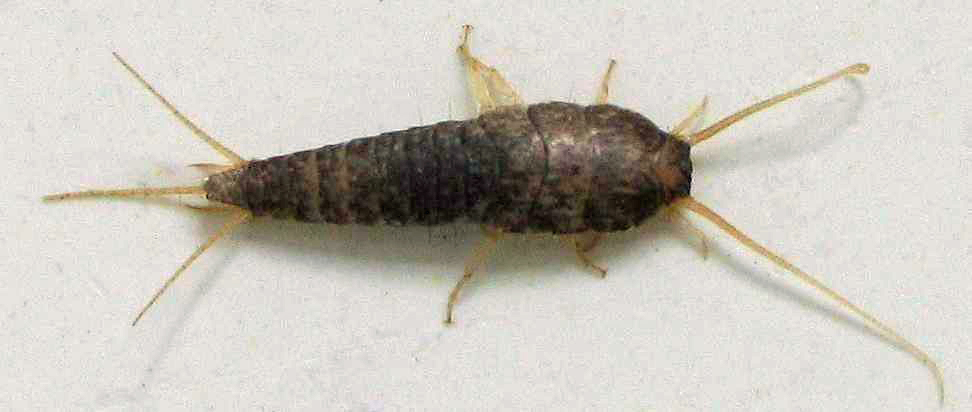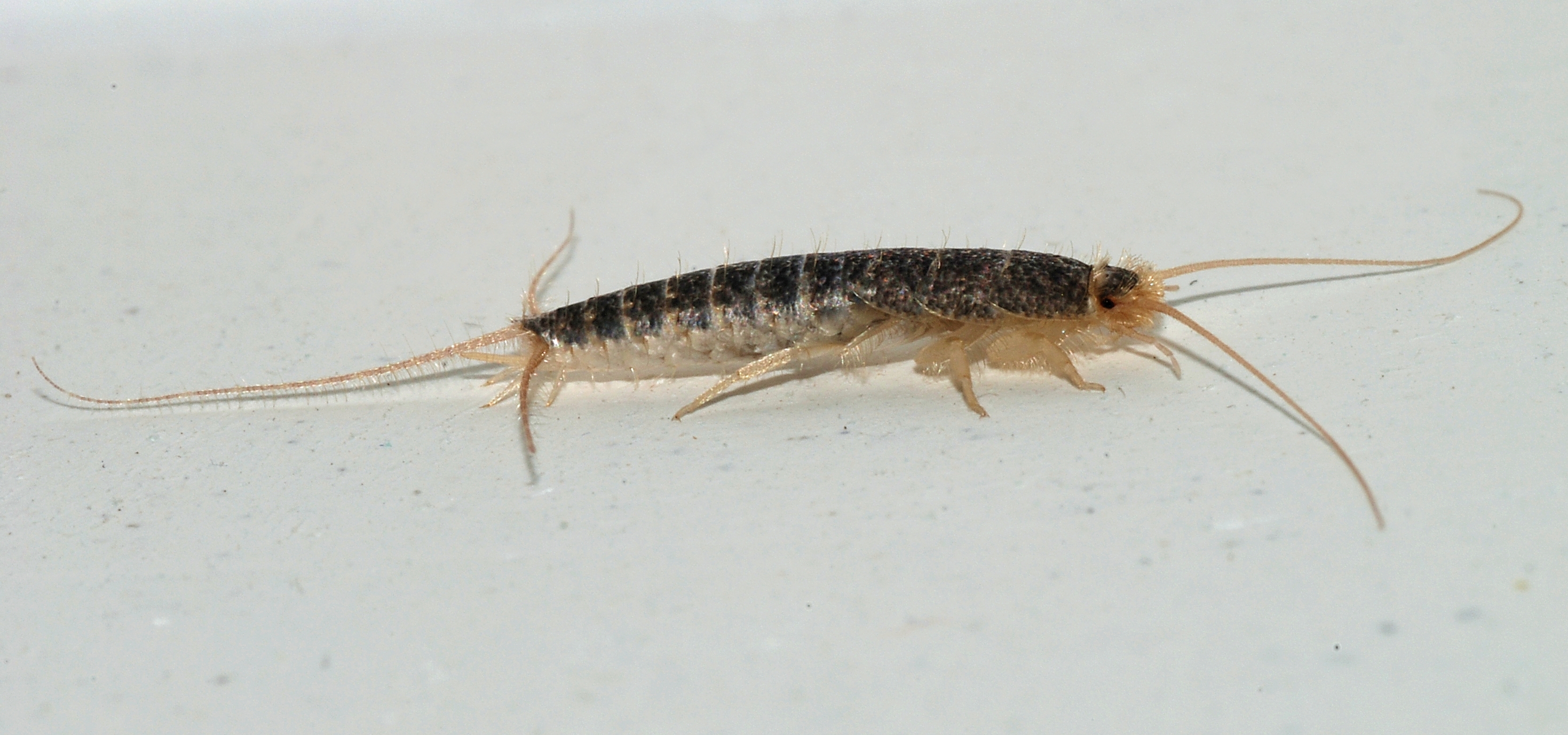|
Ctenolepisma
''Ctenolepisma'' is a genus of primitive insects in the order Zygentoma, closely related to the silverfish and firebrat but less reliant on human habitation, some species being found both indoors and outdoors and some found exclusively outdoors. The genus is distributed nearly worldwide in warm regions. Australia lacks native ''Ctenolepisma'', but is home to introduced species. Nomenclature Most authors have historically treated the nomenclatural gender of ''Ctenolepisma'' as feminine, but in 2018 the International Commission on Zoological Nomenclature issued a formal ruling (ICZN Opinion 2427) stating the gender of ''Lepisma'' (and all genera with that ending) is neuter, following ICZN Article 30, which resulted in changes to the spelling of several well-known species, including ''Ctenolepisma longicaudatum'' (formerly ''longicaudata''). Diversity There are roughly 75 extant species presently recognized as valid in the genus, and one fossil *''Ctenolepisma abyssinicum'' Men ... [...More Info...] [...Related Items...] OR: [Wikipedia] [Google] [Baidu] |
Ctenolepisma Calvum
''Ctenolepisma'' is a genus of primitive insects in the order Zygentoma, closely related to the silverfish and firebrat but less reliant on human habitation, some species being found both indoors and outdoors and some found exclusively outdoors. The genus is distributed nearly worldwide in warm regions. Australia lacks native ''Ctenolepisma'', but is home to introduced species. Nomenclature Most authors have historically treated the nomenclatural gender of ''Ctenolepisma'' as feminine, but in 2018 the International Commission on Zoological Nomenclature issued a formal ruling (ICZN Opinion 2427) stating the gender of ''Lepisma'' (and all genera with that ending) is neuter, following ICZN Article 30, which resulted in changes to the spelling of several well-known species, including ''Ctenolepisma longicaudatum'' (formerly ''longicaudata''). Diversity There are roughly 75 extant species presently recognized as valid in the genus, and one fossil *''Ctenolepisma abyssinicum'' Men ... [...More Info...] [...Related Items...] OR: [Wikipedia] [Google] [Baidu] |
Ctenolepisma Longicaudatum
''Ctenolepisma longicaudatum'', generally known as the gray silverfish, long-tailed silverfish or paper silverfish, is a species of Zygentoma in the family Lepismatidae. It was described by the German entomologist Karl Leopold Escherich in 1905 based on specimens collected in South Africa, but is found worldwide as synanthrope in human housings. In recent years, gray silverfish have increasingly become an issue in indoor environments in Europe, especially in newly built houses with a stable climate beneficial for the growth and reproduction of this species. As a food generalist with the ability to digest the cellulose contained in paper and cellulose-based textiles like rayon, ''Ctenolepisma longicaudatum'' is considered a pest species in cultural heritage institutions like libraries and archives. Nomenclature Most authors have historically treated the nomenclatural gender of ''Ctenolepisma'' as feminine, but in 2018 the International Commission on Zoological Nomenclature issue ... [...More Info...] [...Related Items...] OR: [Wikipedia] [Google] [Baidu] |
Ctenolepisma Ciliatum
''Ctenolepisma ciliatum'' is a species of primitive insect of the order Zygentoma. Described from Spain, it is a common species in subarid habitats of the Mediterranean The Mediterranean Sea is a sea connected to the Atlantic Ocean, surrounded by the Mediterranean Basin and almost completely enclosed by land: on the north by Western Europe, Western and Southern Europe and Anatolia, on the south by North Africa ... bassin from Portugal to Western Asia. It is very close to ''C. longicaudatum''. Its dorsal pattern is usually uniformly brownish or greyish with iridescences, or with two or four longitudinal fringes along the abdomen. Anatomic/morphologic differences with related species involve microscopic characters as setation or shape and distribution of scales. References On ''Ctenolepisma ciliata'' and a new related species, ''Ctenolepisma armeniaca'' sp. n. (Zygentoma, Lepismatidae) Lepismatidae Insects of Europe Fauna of Spain Insects described in 1831 Taxa named by ... [...More Info...] [...Related Items...] OR: [Wikipedia] [Google] [Baidu] |
Silverfish
The silverfish (''Lepisma saccharinum'') is a species of small, primitive, wingless insect in the order Zygentoma (formerly Thysanura). Its common name derives from the insect's silvery light grey colour, combined with the fish-like appearance of its movements. The scientific name (''L. saccharinum'') indicates that the silverfish's diet consists of carbohydrates such as sugar or starches. While the common name ''silverfish'' is used throughout the global literature to refer to various species of Zygentoma, the Entomological Society of America restricts use of the term solely for ''Lepisma saccharinum''. Description The silverfish is a nocturnal insect typically long. Its abdomen tapers at the end, giving it a fish-like appearance. The newly hatched are whitish, but develop a greyish hue and metallic shine as they get older. It has two long cerci and one terminal filament at the tip of the abdomen between the cerci. It also has two small compound eyes, although other mem ... [...More Info...] [...Related Items...] OR: [Wikipedia] [Google] [Baidu] |
Ctenolepisma Almeriense
''Ctenolepisma almeriense'' is a species of primitive insect of the order Zygentoma. Members of this species were once attributed to the widespread species ''Ctenolepisma lineatum'' but there are small but consistent differences which mark this as a separate species. It is found exclusively in south-eastern Spain, on Mediterranean slopes of the provinces of Alicante, Almería, Murcia and Valencia. This species inhabits arid regions, usually under debris at the base of trees and shrubs, especially ''Pinus'' and ''Juniperus''. There appears to be no overlap in the ranges of this species and ''C. lineatum'', the latter species preferring moister environments. Both ''C. lineatum'' and ''C. almeriense'' are up to 13mm in length (excluding appendages) with considerable variation in pattern. The only consistent morphological differences between the two is in the combs of bristles on the thorax The thorax or chest is a part of the anatomy of humans, mammals, and other tetrapod anim ... [...More Info...] [...Related Items...] OR: [Wikipedia] [Google] [Baidu] |
Ctenolepisma Algharbicum
''Ctenolepisma algharbicum'' is a species of silverfish in the family Lepismatidae Lepismatidae is a family of primitive wingless insects with about 190 described species. This family contains the two most familiar members of the order Zygentoma: the silverfish (''Lepisma saccharinum'') and the firebrat (''Thermobia domestica'' .... References Further reading * Lepismatidae Articles created by Qbugbot Insects described in 1978 {{Zygentoma-stub ... [...More Info...] [...Related Items...] OR: [Wikipedia] [Google] [Baidu] |
Ctenolepisma Dubitale
''Ctenolepisma dubitale'' is a species of silverfish in the family Lepismatidae Lepismatidae is a family of primitive wingless insects with about 190 described species. This family contains the two most familiar members of the order Zygentoma: the silverfish (''Lepisma saccharinum'') and the firebrat (''Thermobia domestica'' .... References Further reading * Lepismatidae Articles created by Qbugbot Insects described in 1959 {{Zygentoma-stub ... [...More Info...] [...Related Items...] OR: [Wikipedia] [Google] [Baidu] |
Zygentoma
Zygentoma are an order in the class Insecta, and consist of about 550 known species. The Zygentoma include the so-called silverfish or fishmoths, and the firebrats. A conspicuous feature of the order are the three long caudal filaments. The two lateral filaments are cerci, and the medial one is an epiproct or ''appendix dorsalis''. In this they resemble the Archaeognatha, although the cerci of Zygentoma, unlike in the latter order, are nearly as long as the epiproct. Until the late twentieth century the Zygentoma were regarded as a suborder of the Thysanura, until it was recognized that the order Thysanura was paraphyletic, thus raising the two suborders to the status of independent monophyletic orders, with Archaeognatha as sister group to the Dicondylia, including the Zygentoma. Etymology The name "Zygentoma" is derived from the Greek ('), in context meaning "yoke" or "bridge"; and ('), "insects", literally "cut into" because of the segmented anatomy of typical insects. pa ... [...More Info...] [...Related Items...] OR: [Wikipedia] [Google] [Baidu] |
Introduced Species
An introduced species, alien species, exotic species, adventive species, immigrant species, foreign species, non-indigenous species, or non-native species is a species living outside its native distributional range, but which has arrived there by human activity, directly or indirectly, and either deliberately or accidentally. Non-native species can have various effects on the local ecosystem. Introduced species that become established and spread beyond the place of introduction are considered naturalized. The process of human-caused introduction is distinguished from biological colonization, in which species spread to new areas through "natural" (non-human) means such as storms and rafting. The Latin expression neobiota captures the characteristic that these species are ''new'' biota to their environment in terms of established biological network (e.g. food web) relationships. Neobiota can further be divided into neozoa (also: neozoons, sing. neozoon, i.e. animals) and neophyt ... [...More Info...] [...Related Items...] OR: [Wikipedia] [Google] [Baidu] |
Myanmar
Myanmar, ; UK pronunciations: US pronunciations incl. . Note: Wikipedia's IPA conventions require indicating /r/ even in British English although only some British English speakers pronounce r at the end of syllables. As John C. Wells, John Wells explains, the English spellings of both Myanmar and Burma assume a non-rhotic variety of English, in which the letter r before a consonant or finally serves merely to indicate a long vowel: [ˈmjænmɑː, ˈbɜːmə]. So the pronunciation of the last syllable of Myanmar as [mɑːr] or of Burma as [bɜːrmə] by some speakers in the UK and most speakers in North America is in fact a spelling pronunciation based on a misunderstanding of non-rhotic spelling conventions. The final ''r'' in ''Myanmar'' was not intended for pronunciation and is there to ensure that the final a is pronounced with the broad a, broad ''ah'' () in "father". If the Burmese name my, မြန်မာ, label=none were spelled "Myanma" in English, this would b ... [...More Info...] [...Related Items...] OR: [Wikipedia] [Google] [Baidu] |
Democratic Republic Of The Congo
The Democratic Republic of the Congo (french: République démocratique du Congo (RDC), colloquially "La RDC" ), informally Congo-Kinshasa, DR Congo, the DRC, the DROC, or the Congo, and formerly and also colloquially Zaire, is a country in Central Africa. It is bordered to the northwest by the Republic of the Congo, to the north by the Central African Republic, to the northeast by South Sudan, to the east by Uganda, Rwanda, and Burundi, and by Tanzania (across Lake Tanganyika), to the south and southeast by Zambia, to the southwest by Angola, and to the west by the South Atlantic Ocean and the Cabinda exclave of Angola. By area, it is the second-largest country in Africa and the 11th-largest in the world. With a population of around 108 million, the Democratic Republic of the Congo is the most populous officially Francophone country in the world. The national capital and largest city is Kinshasa, which is also the nation's economic center. Centered on the Cong ... [...More Info...] [...Related Items...] OR: [Wikipedia] [Google] [Baidu] |
Chad
Chad (; ar, تشاد , ; french: Tchad, ), officially the Republic of Chad, '; ) is a landlocked country at the crossroads of North and Central Africa. It is bordered by Libya to the north, Sudan to the east, the Central African Republic to the south, Cameroon to the southwest, Nigeria to the southwest (at Lake Chad), and Niger to the west. Chad has a population of 16 million, of which 1.6 million live in the capital and largest city of N'Djamena. Chad has several regions: a desert zone in the north, an arid Sahelian belt in the centre and a more fertile Sudanian Savanna zone in the south. Lake Chad, after which the country is named, is the second-largest wetland in Africa. Chad's official languages are Arabic and French. It is home to over 200 different ethnic and linguistic groups. Islam (55.1%) and Christianity (41.1%) are the main religions practiced in Chad. Beginning in the 7th millennium BC, human populations moved into the Chadian basin in great numbe ... [...More Info...] [...Related Items...] OR: [Wikipedia] [Google] [Baidu] |
.jpg)

